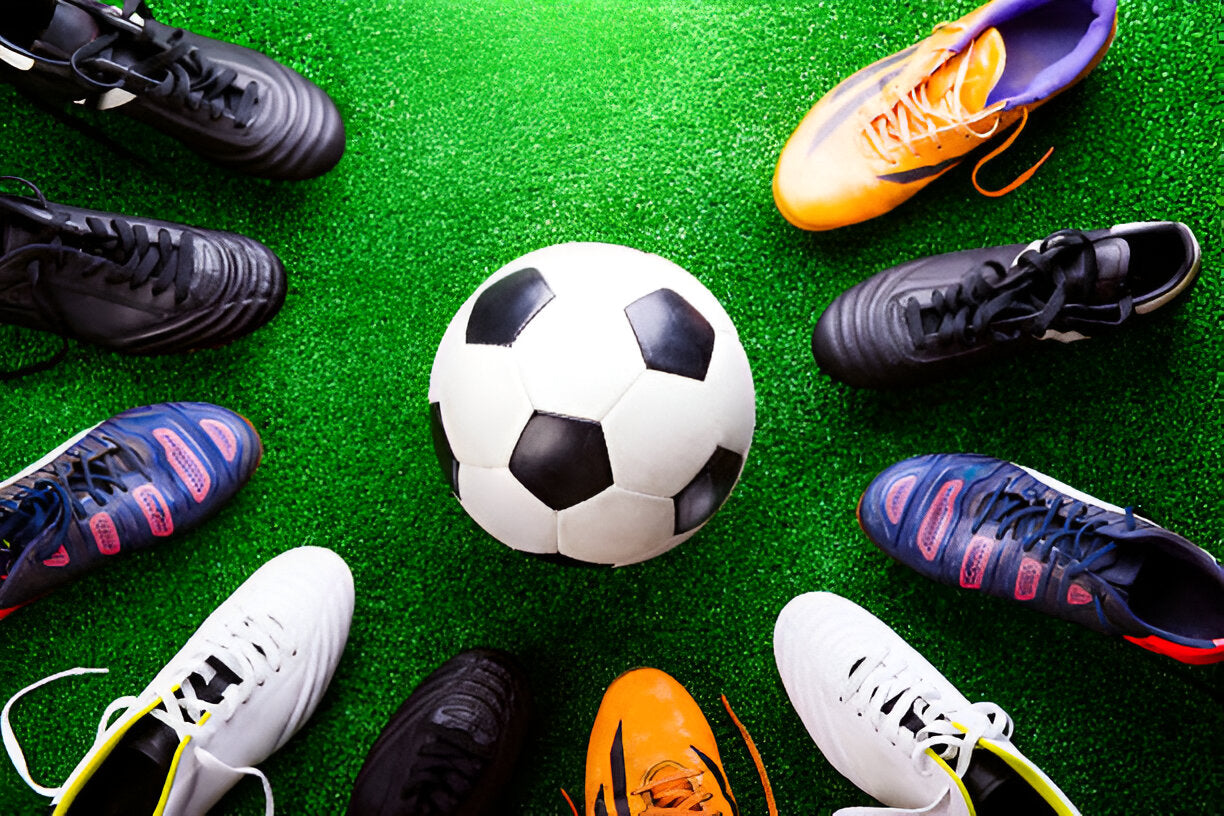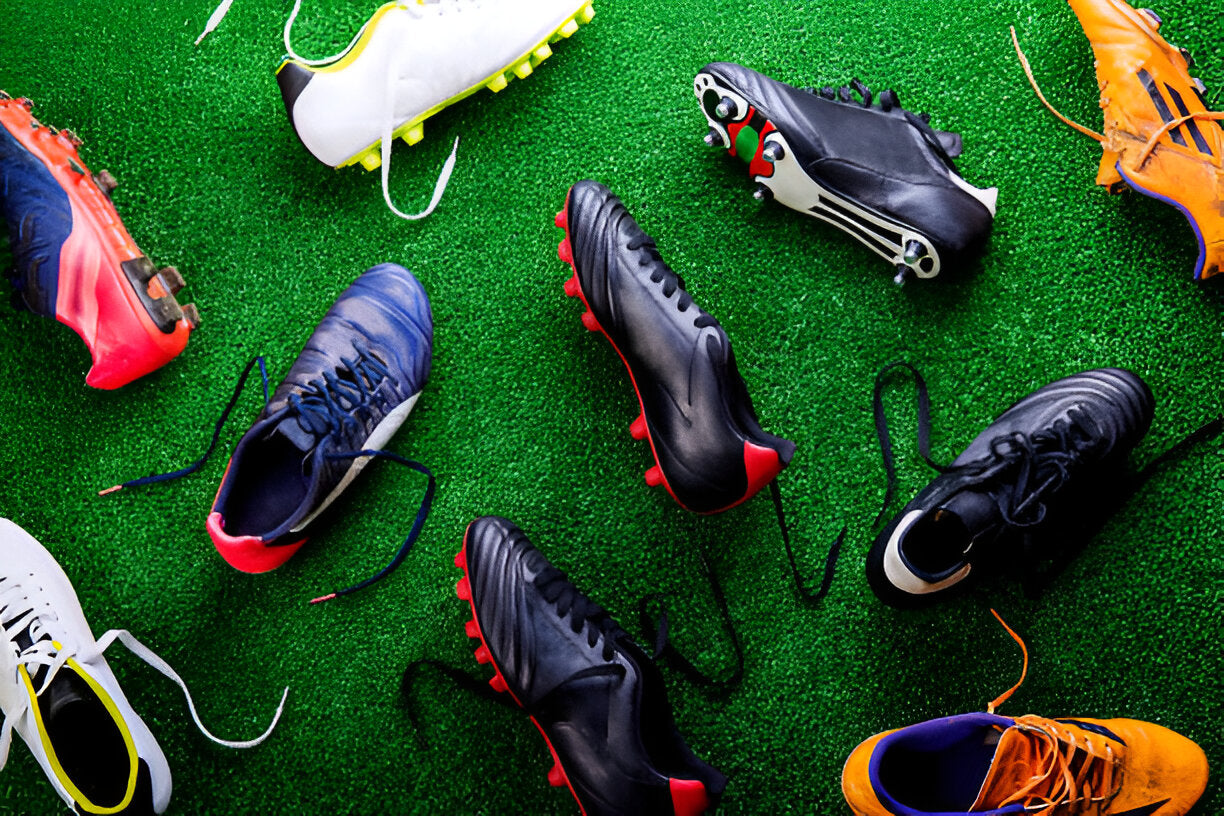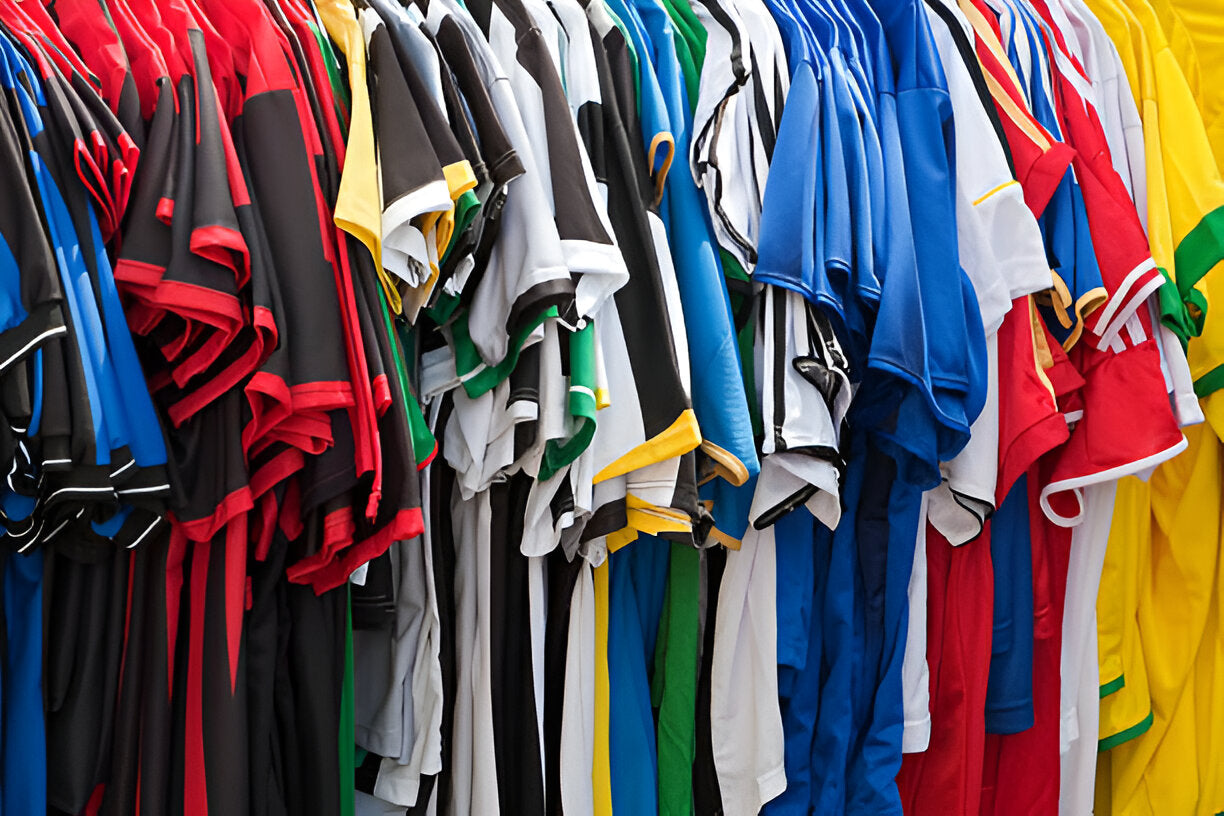Choosing the right soccer cleats can make all the difference in a player's performance on the field. As arguably the most critical gear in soccer, cleats provide the foundation for movement, traction, and overall comfort. For those new to the game, picking out a pair of soccer cleats can be overwhelming due to the variety of options available.
Each type of cleat is designed for specific surfaces and playing conditions, and wearing the wrong type can lead to discomfort, decreased performance, or even injury. In this blog, we will discuss the different types of soccer cleats, the surfaces they are best suited for, and the materials used to make them.
Different Types of Soccer Cleats:
- Firm Ground Soccer Cleats: Firm-ground (FG) soccer cleats are the most popular and versatile option, designed for natural grass fields in dry or slightly damp conditions. These cleats come equipped with studs typically made of plastic and can be either conical or bladed. The primary purpose of these studs is to provide traction and stability on the field, allowing players to change direction quickly and accelerate without slipping. Firm ground cleats are durable enough to withstand various weather conditions, making them the go-to choice for many players. They can also be used on artificial grass or thin turf, though performance may be reduced on such surfaces.
- Soft Ground Soccer Cleats (Metal Cleats): Soft ground (SG) soccer cleats, often known as metal cleats, are specifically designed for wet, muddy, or very soft grass surfaces. These cleats feature longer metal studs, usually fewer in number than those on firm ground cleats. The metal studs are strategically placed to dig deeper into soft surfaces, providing enhanced grip and preventing players from slipping. Avoid using these cleats on hard or dry surfaces as the metal studs can wear down quickly and may damage the field. They are ideal for rainy matches or heavily saturated fields.
- Hard Ground or Multi-Ground Soccer Cleats: Hard ground (HG) or multi-ground (MG) cleats are designed for dry, hard-packed fields where firm ground cleats would struggle to penetrate. These cleats have shorter studs, often spread out to distribute the player's weight more evenly across the surface, ensuring optimal traction and stability without digging too deeply into the ground. Multi-ground cleats combine aspects of firm ground and artificial grass cleats, making them a versatile option for players who often switch between different surfaces.
- Artificial Grass Soccer Cleats (Turf Shoes): Artificial grass (AG) cleats are ideal for synthetic grass or turf fields. Unlike firm ground cleats, AG cleats have numerous shorter studs that are more evenly distributed across the soleplate, helping players maintain balance and control while reducing the impact on joints. Turf shoes, often grouped with AG cleats, feature rubber studs that provide grip without damaging the surface, making them perfect for artificial fields.
- Indoor Soccer Shoes: While technically not cleats, indoor soccer shoes are crucial for players who play indoor soccer, futsal, or pickup games on hard, flat surfaces. These shoes resemble sneakers but are designed with non-marking rubber soles that provide excellent traction and grip on indoor courts. Indoor soccer shoes don’t have studs and are designed for surfaces like wood or synthetic flooring, making them versatile for off-field wear.
Materials Used in Soccer Cleats
In addition to the type of cleat, the material used in soccer shoes plays a significant role in their performance, comfort, and durability. Here are some common materials used in modern soccer cleats:
- Leather Uppers: Leather soccer cleats are known for their comfort and ability to mold to the shape of a player's foot. Kangaroo leather, often called K-leather, is the most premium option, offering superior touch, flexibility, and durability. Calfskin leather is another high-quality alternative. Leather cleats provide a more personalized fit over time, but they can be heavier than synthetic options and require regular maintenance.
- Synthetic Uppers: Synthetic materials have gained popularity due to their lightweight construction and affordability. While synthetic soccer cleats don't mold to the foot like leather, they are often more durable and water-resistant. Synthetic cleats are easier to clean and maintain, ideal for players prioritizing convenience.
- Knitted Uppers: A relatively new design, knitted uppers provide a sock-like fit that enhances comfort and flexibility. Knitted cleats are popular among players who prefer a snug, lightweight feel. However, knitted cleats may lack the durability of leather or synthetic options in rugged playing conditions.
Choosing the Right Cleats for You
The best soccer cleats for you depend on the surface you’re playing on, your position, and personal preferences. Here are some tips:
- Consider the Surface: Firm ground cleats are perfect for natural grass fields, while artificial grass cleats should be used on turf. If you frequently play on multiple surfaces, multi-ground cleats offer versatility. Soft ground cleats are essential for wet or muddy fields.
- Fit is Key: Cleats should fit snugly, like a second skin, without being too tight or loose. Aim for a quarter-inch space at the toe for comfort. Leather cleats mold to your foot over time, while synthetic cleats offer a structured fit right out of the box.
- Material Matters: Leather cleats are best for comfort, especially in high-quality kangaroo leather. Synthetic cleats offer a lighter, more affordable option, and knitted cleats provide flexibility and a sock-like fit.
Conclusion
Selecting the right pair of soccer cleats is crucial to maximizing your performance on the field. Whether you’re playing on natural grass, turf, or indoor courts, the cleats you choose affect your traction, comfort, and gameplay. By understanding the different types of cleats and the materials used, you can make an informed choice that suits your style. The right cleats enhance performance, prevent injuries, and ensure long-term comfort.



